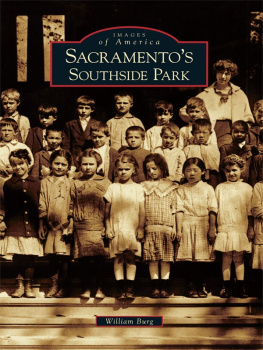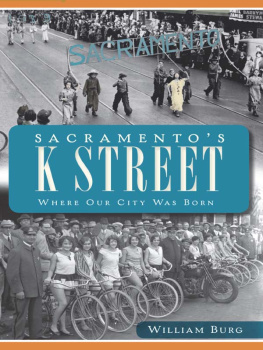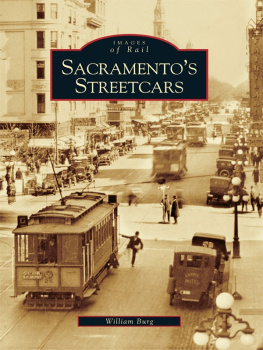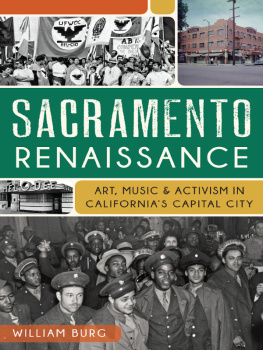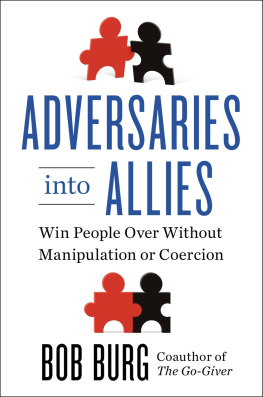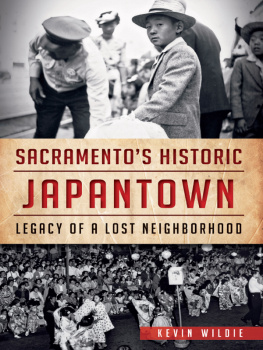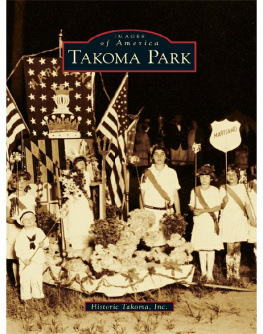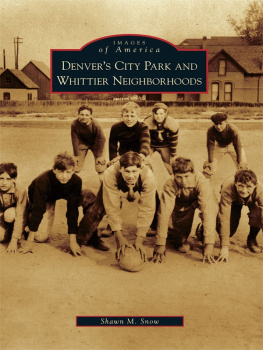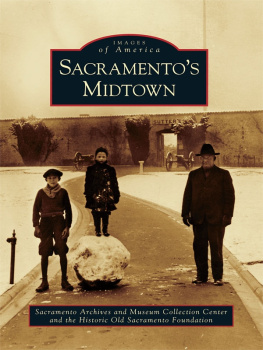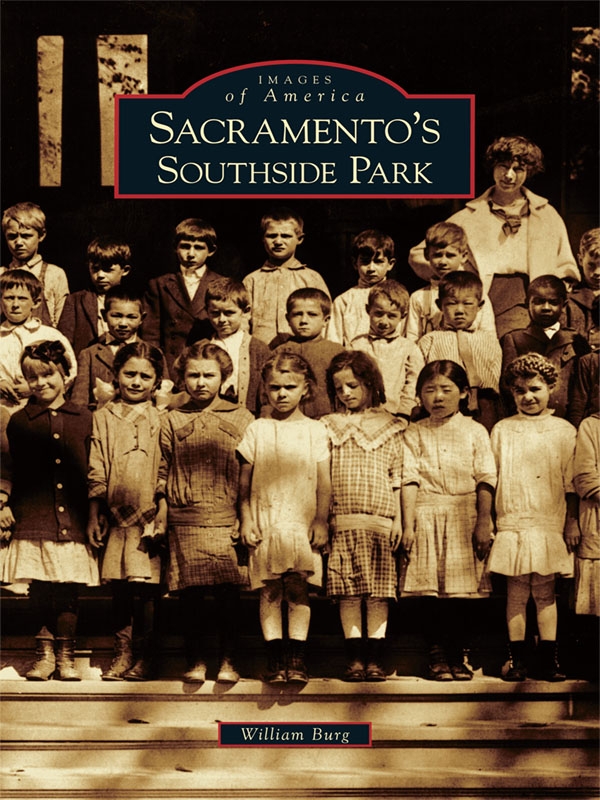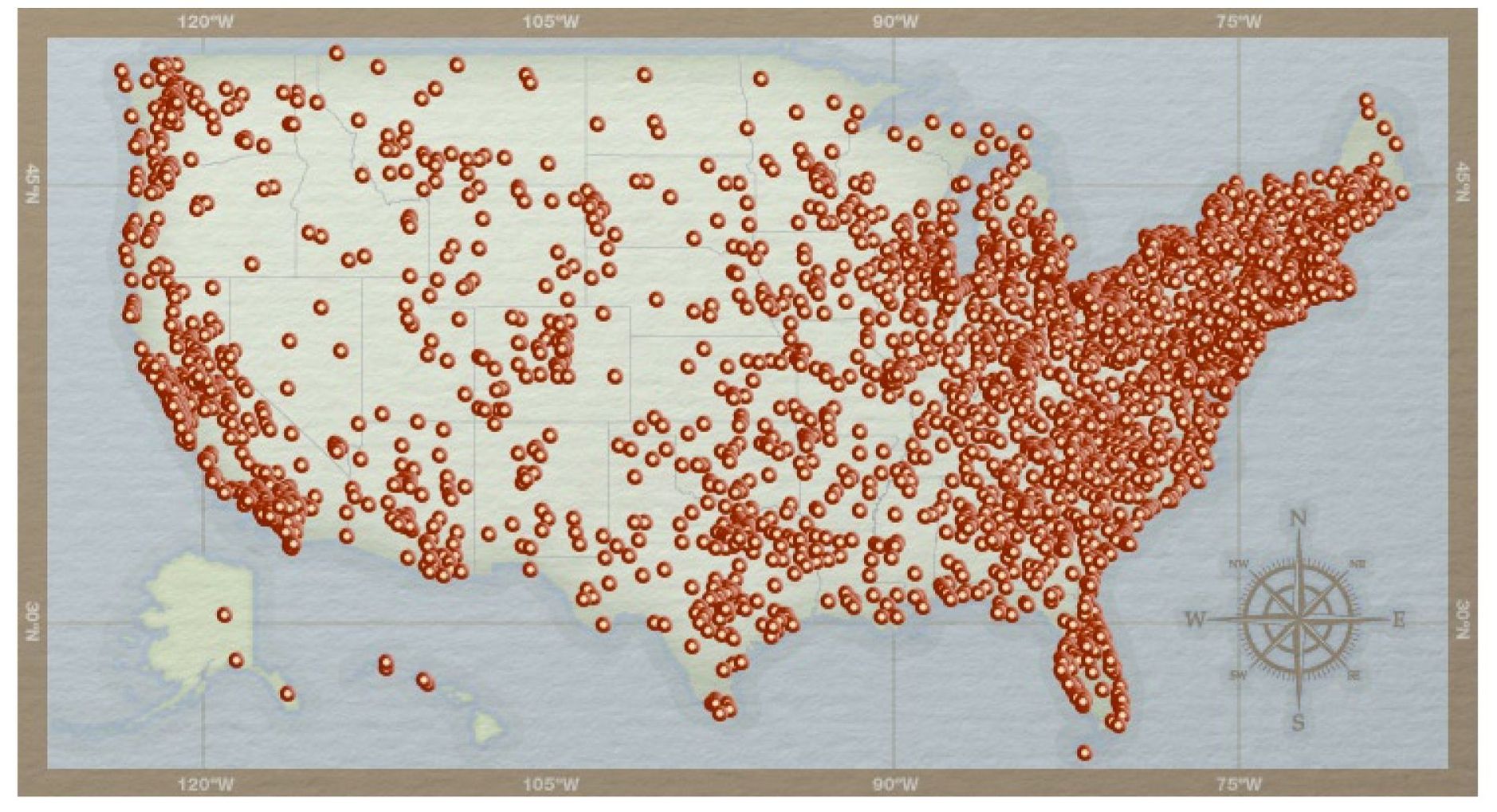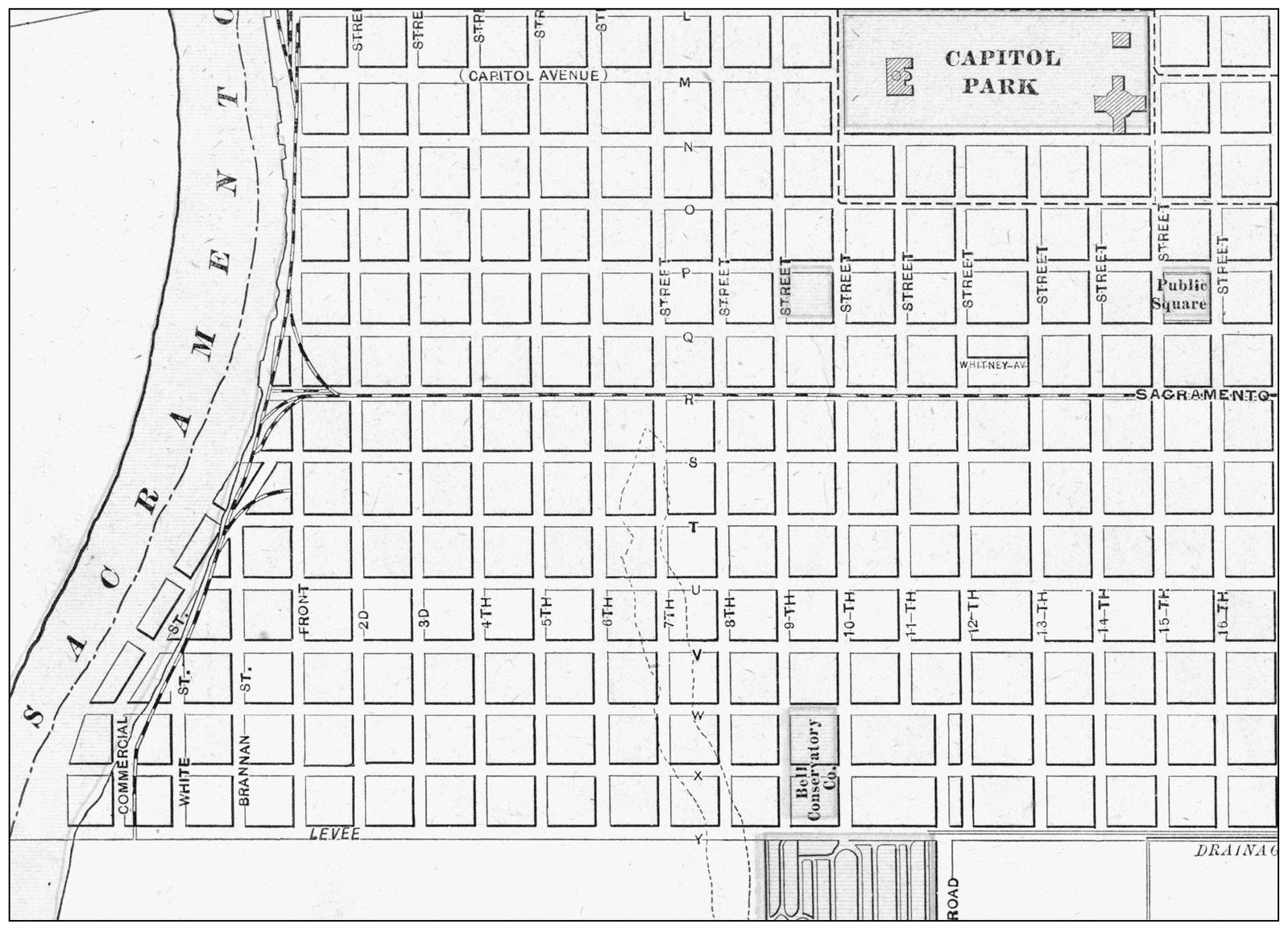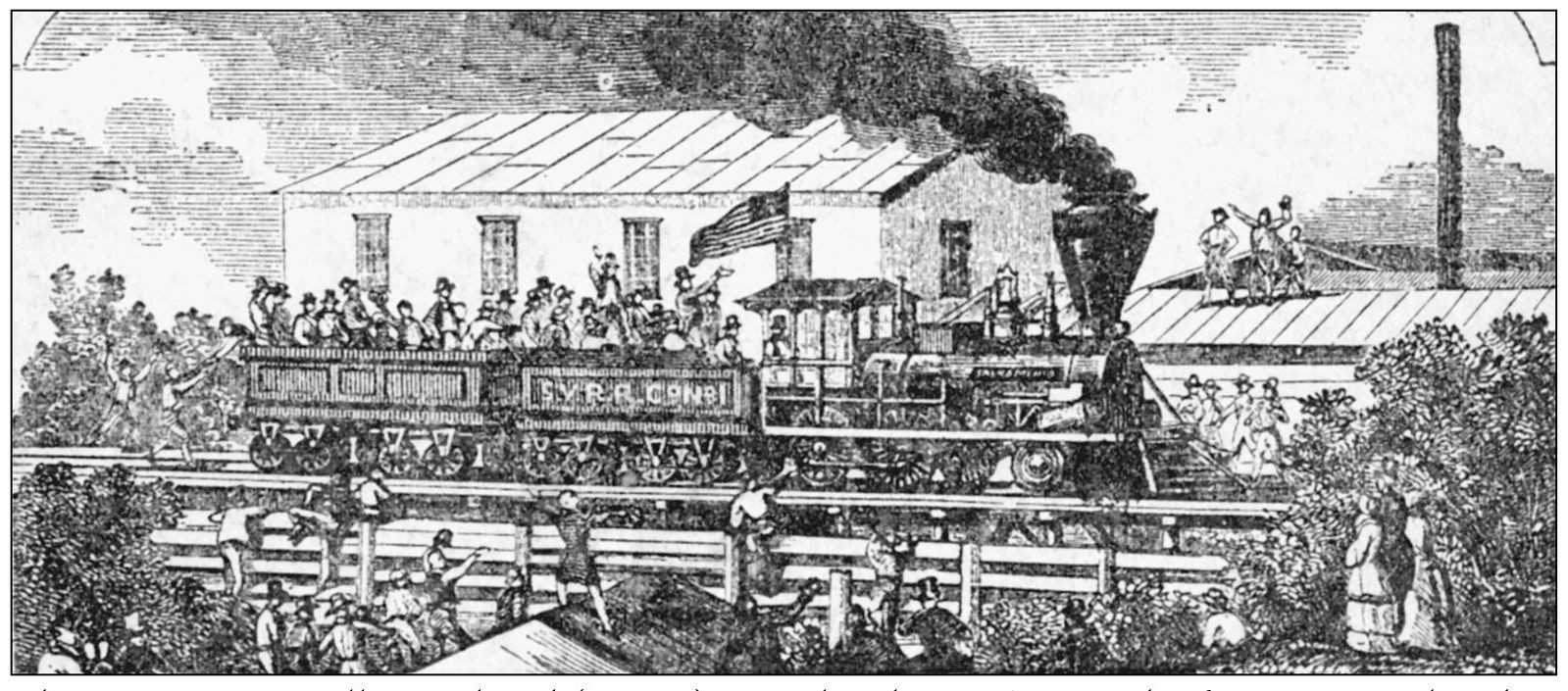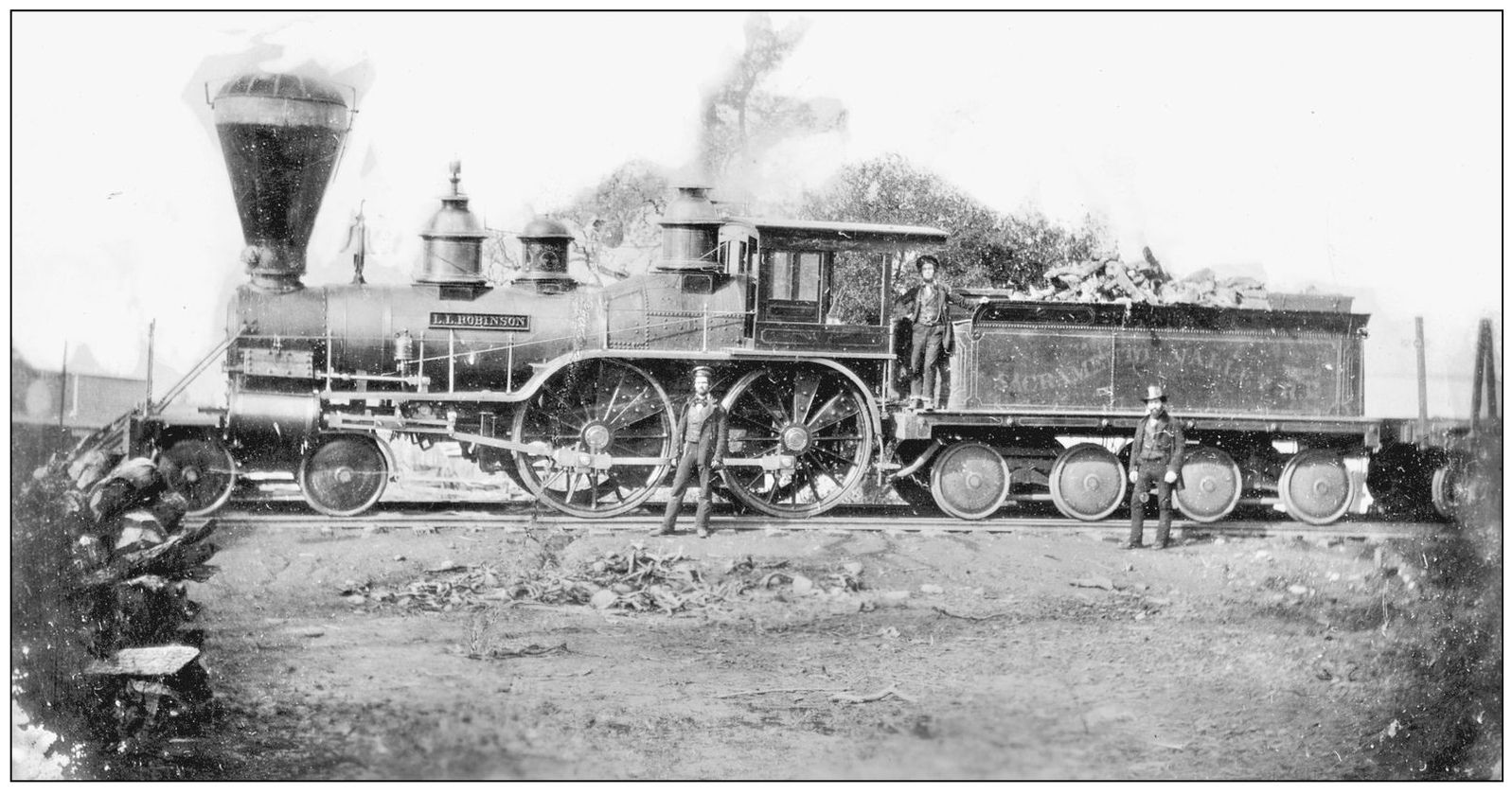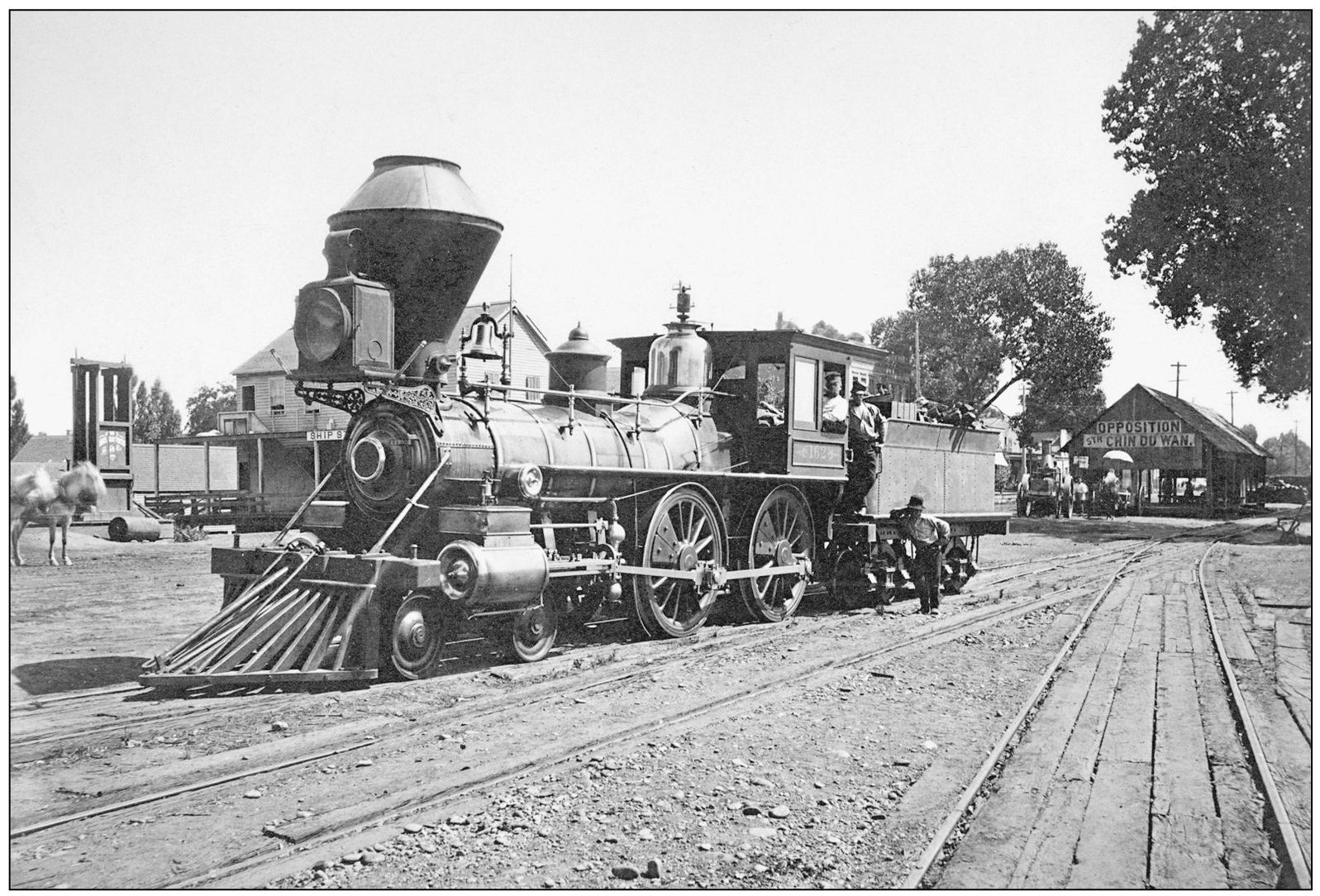ACKNOWLEDGMENTS
During an earlier project, Al Balshor suggested that I write a book about Southside Park, and I wish to thank him the most. He introduced me to the Southside Improvement Club, shared his memories and photographs, and encouraged others to participate. Equally important was the help of Paul Trudeau, president of the Southside Park Neighborhood Association. He provided research material and leads and introduced me to longtime neighborhood residents who were willing to share their stories and photographs. Both of these gentlemen embody the community spirit and genuine love of neighborhood that I have found in Southside Park and hope to capture in this book.
Photographs and documents from many archives and libraries were used to create this book. My thanks go to the staff of the Sacramento Room of the Sacramento Public Library, the Sacramento Archives and Museum Collection Center, the California State Librarys California Room, Sacramento State Universitys Special Collections and University Archives, the University of Southern California (USC) Archives, and the Western Railway Museum Archives.
Dolores Silva Greenslate, historian of the Portuguese Cultural and Historical Society of Sacramento, provided many photographs and helped fact-check the Portuguese history section. Bill Cerrutti and Tony Plescia of the Italian Cultural Society of Sacramento provided photographs and background on Sacramentos Italian community. Ed Carroll provided research information on baseball and the Fong Mansion.
Oral history interviews, background information, and photographs were provided by Tony Lopez, Ed Mores, Gene Plecas, Al and Marie Balshor, Clarence Kunz, Steve Morgan, Steve Silva, Ed Kanelos Jr., Billie Kanelos, Imam Ibrahim Hamdani, the Pompei family, Ronny King, Georgina Montrond, Manuel Viera, Dora Bazan, Ginger Rutland, Mike Pryor, and Marjorie Hollins.
Finally, thanks to all the members of the Southside Improvement Club for welcoming me at their meetings and sharing their memories. They still meet regularly, and membership is still 25 a month.
BIBLIOGRAPHY
Fogelson, Robert. Downtown: Its Rise and Fall, 18801950 . New Haven and London: Yale University Press, 2001.
Galarza, Ernesto. Barrio Boy . Notre Dame, IN: University of Notre Dame Press, 1993.
Holmes, Lionel and Joseph DAllesandro. Portuguese Pioneers of the Sacramento Area . Sacramento, CA: Portuguese Historical and Cultural Society, 1990.
Jackson, Keneth. Crabgrass Frontier: The Suburbanization of the United States . New York: Oxford University Press, 1985.
Lastufka, Ken. Redevelopment of Sacramentos West End, 19501970: A historical overview with an analysis of the impact of relocation. Masters thesis, California State University, Sacramento, spring 1985.
Maeda, Wayne. Changing Dreams and Treasured Memories: A Story of Japanese Americans in the Sacramento Region . Sacramento, CA: Sacramento Japanese American Citizens League, 2000.
Monkkonen, Eric. America Becomes Urban: The Development Of U.S. Cities And Towns, 17801980 . Berkeley and Los Angeles, CA: University of California Press, 1990.
Pierini, Bruce. Gli Italiani di Sacramento: The Italians of Sacramento. Golden Notes Vol. 37 No. 2, summer 1991.
Roberts, Brian. Redevelopment at the crossroads: How Sacramento City chose between priorities in the 1950s. Golden Notes Vol. 35 No. 2, summer 1989.
Sacramento Branch, American Association of University Women. Vanishing Victorians: A Guide to the Historic Homes of Sacramento . Sacramento, CA: Fong and Fong, 1981.
Stanley, David G. and Jeffrey J. Moreau. Central California Traction: Californias Last Interurban . Wilton, CA: Signature Press, 2002.
Wright, George F., ed. History of Sacramento County, California . Oakland, CA: Thompson and West, 1880.
Find more books like this at
www.imagesofamerica.com
Search for your hometown history, your old
stomping grounds, and even your favorite sports team.
One
THE ARIZONA DISTRICT
The oldest part of Southside Park, between M Street and R Street, was an early residential district with varied uses. Closest to the river were riverfront warehouses for transferring cargo between railroad cars and riverboats. Various early industries were located between Front and Second Streets. To the east were a variety of stately homes, ranging from Gold Rushera structures shipped around Cape Horn to the stately mansions of E. B. Crocker, August Heilbron, and Leland Stanford.
The land south of the R Street railroad levee was swampy marsh, with a slough that ran south in the vicinity of Seventh Street. The city sewer main, a 30-inch cement pipe, ran along Sixth Street, ending in a drainage ditch south of the city limits, near the old city cemetery. From the time that the original Sacramento street plan was laid out, land speculators held and traded parcels sporadically, but few structures were built. Some of the land was used for gardens and small-lot farming, but homes were sparse until about 1900. While the neighborhood south of K Street began to be known as Southside, the portion of Southside south of R Street was known as the Arizona District after the Arizona Gang that resided there.
This map shows the southwestern corner of Sacramento in about 1895, clearly showing downtown Sacramentos grid pattern. The railroad tracks along R Street marked the southern boundary of the original residential neighborhood. The long slough, indicated on the map by an irregular dotted line between Sixth and Eighth Street, eventually became the site for Southside Park. South of the city limits at Y Street is the Old City Cemetery. The cemetery was originally sited closer to X Street on lower ground, but it was found to be susceptible to flooding. (Sacramento Public Library, Sacramento Room.)
The Sacramento Valley Railroad (SVRR), completed in 1856, was the first steam railroad in California. The route was planned by engineer Theodore Judah and was intended to carry goods from the waterfront to mining camps around Folsom. Because Sacramento was still very vulnerable to flooding when the SVRR was completed, the tracks along the western end of R Street were elevated on wooden trestles, visible under the locomotive in this illustration. (California State Library.)
The SVRR used wood-burning steam locomotives like this one, the L. L. Robinson . Because there were not yet any heavy foundries on the West Coast, locomotives had to be ordered from the East Coast. Because there were not yet any railroads spanning the country, these locomotives had to be shipped to California around Cape Horn. The L. L. Robinson was one of the first such locomotives to make the journey. (USC Archives.)

